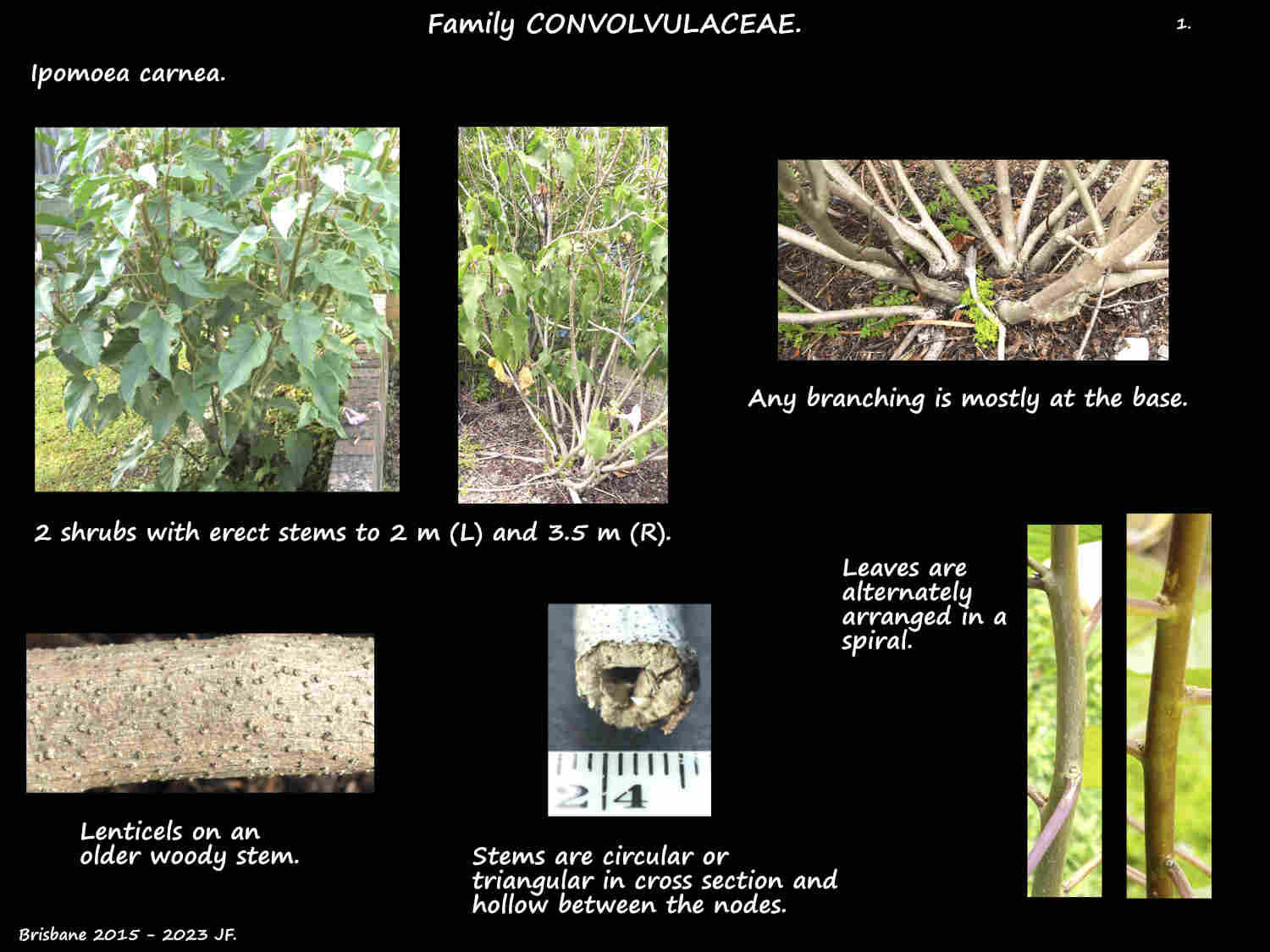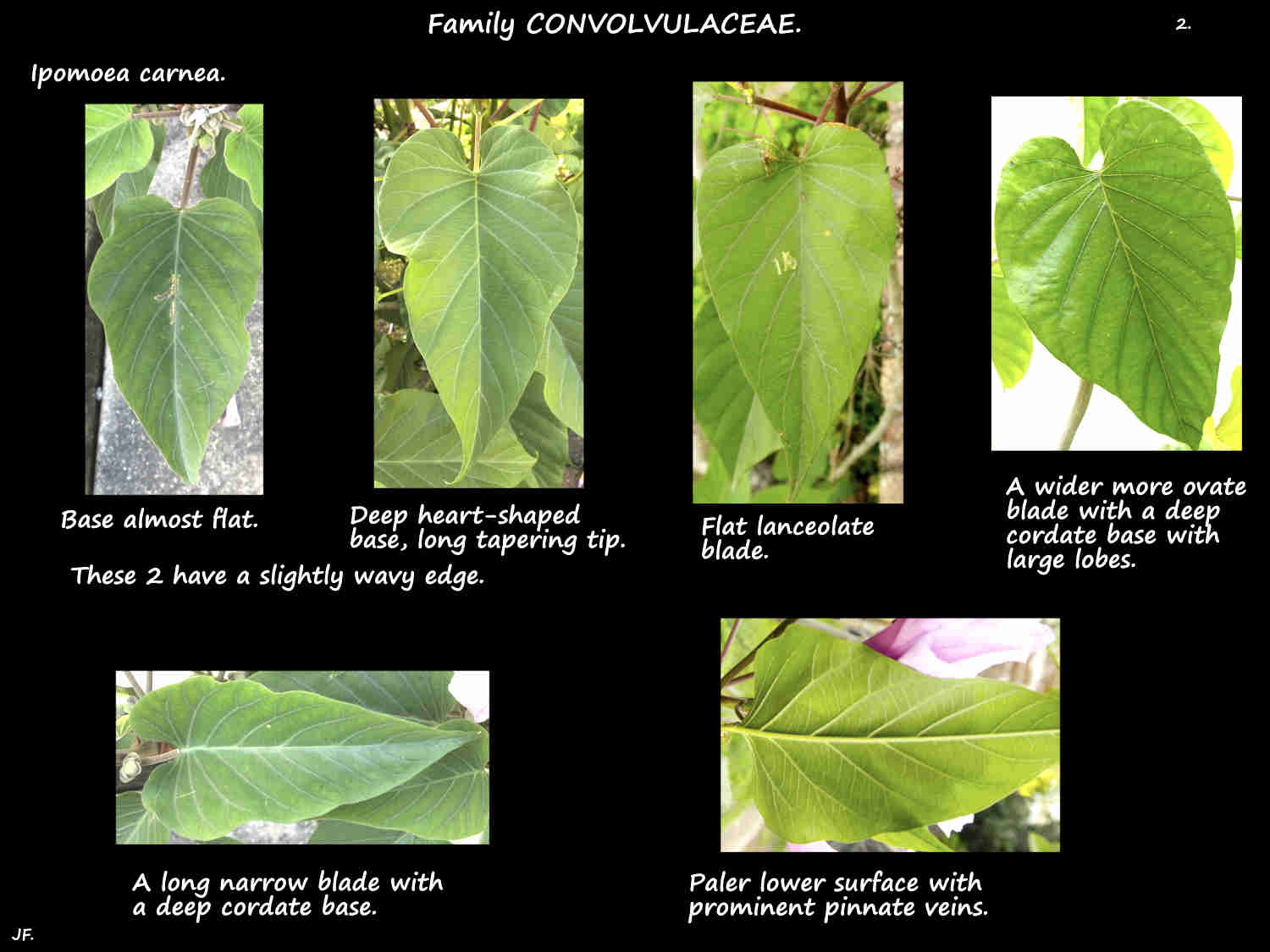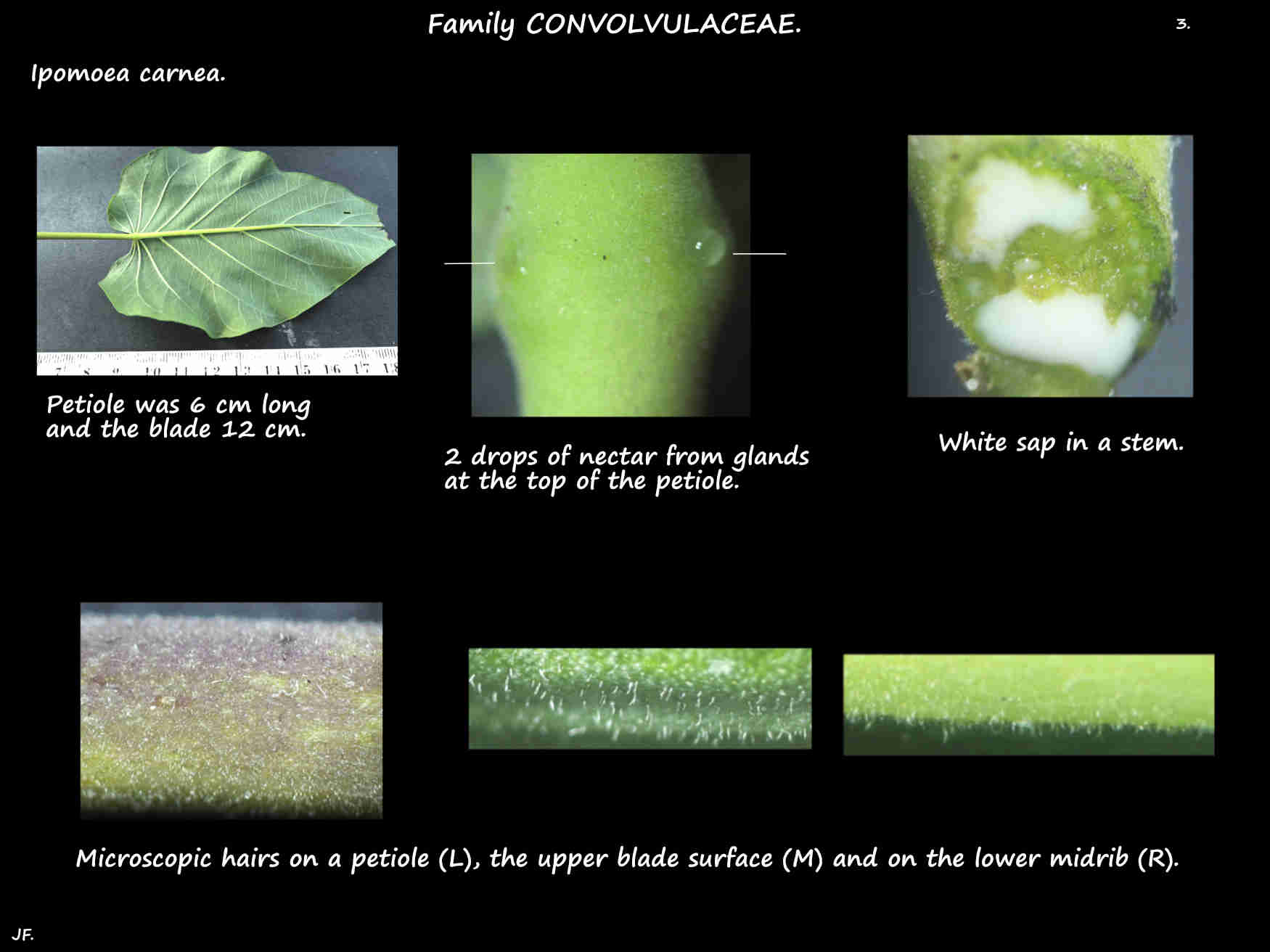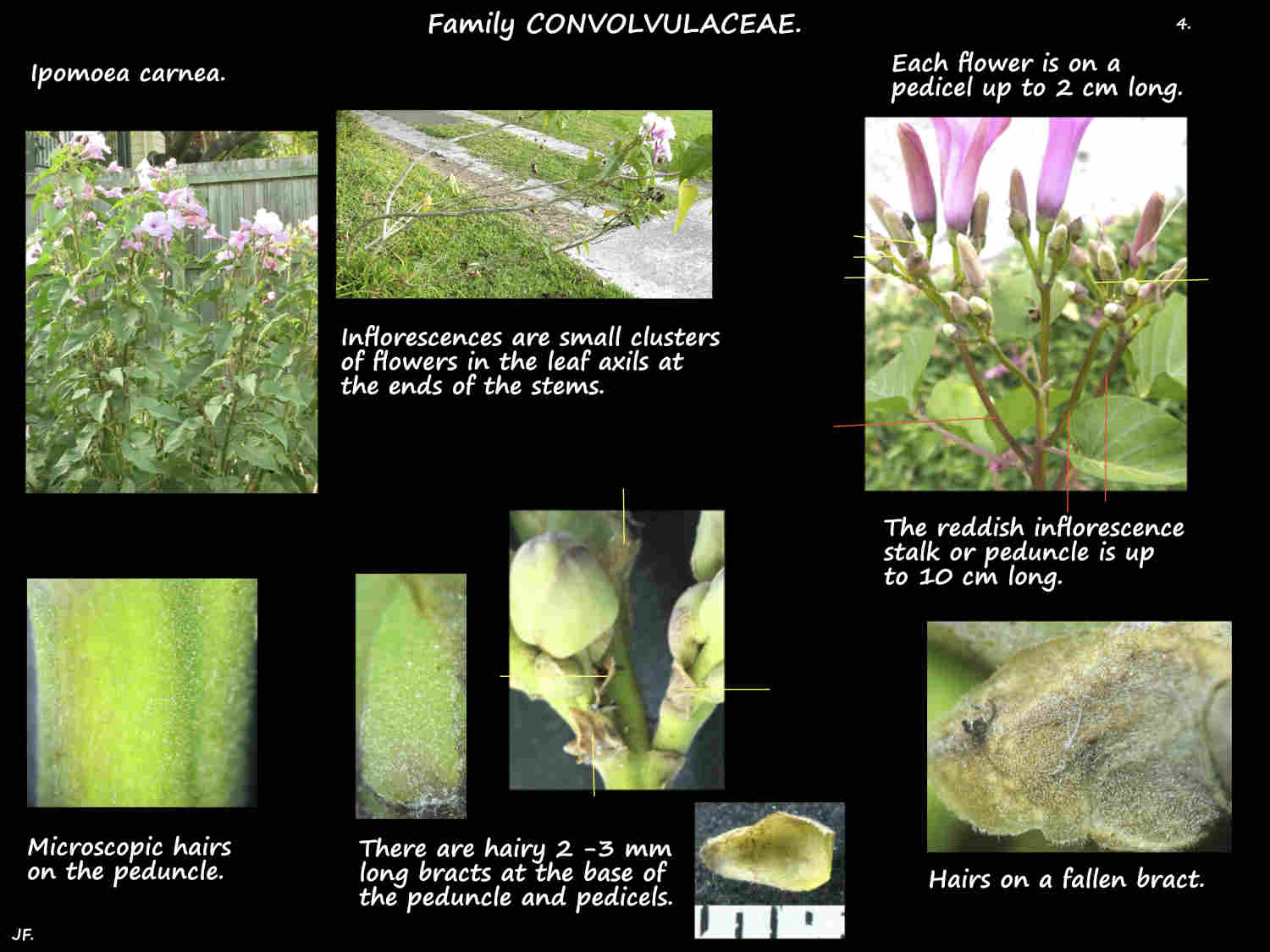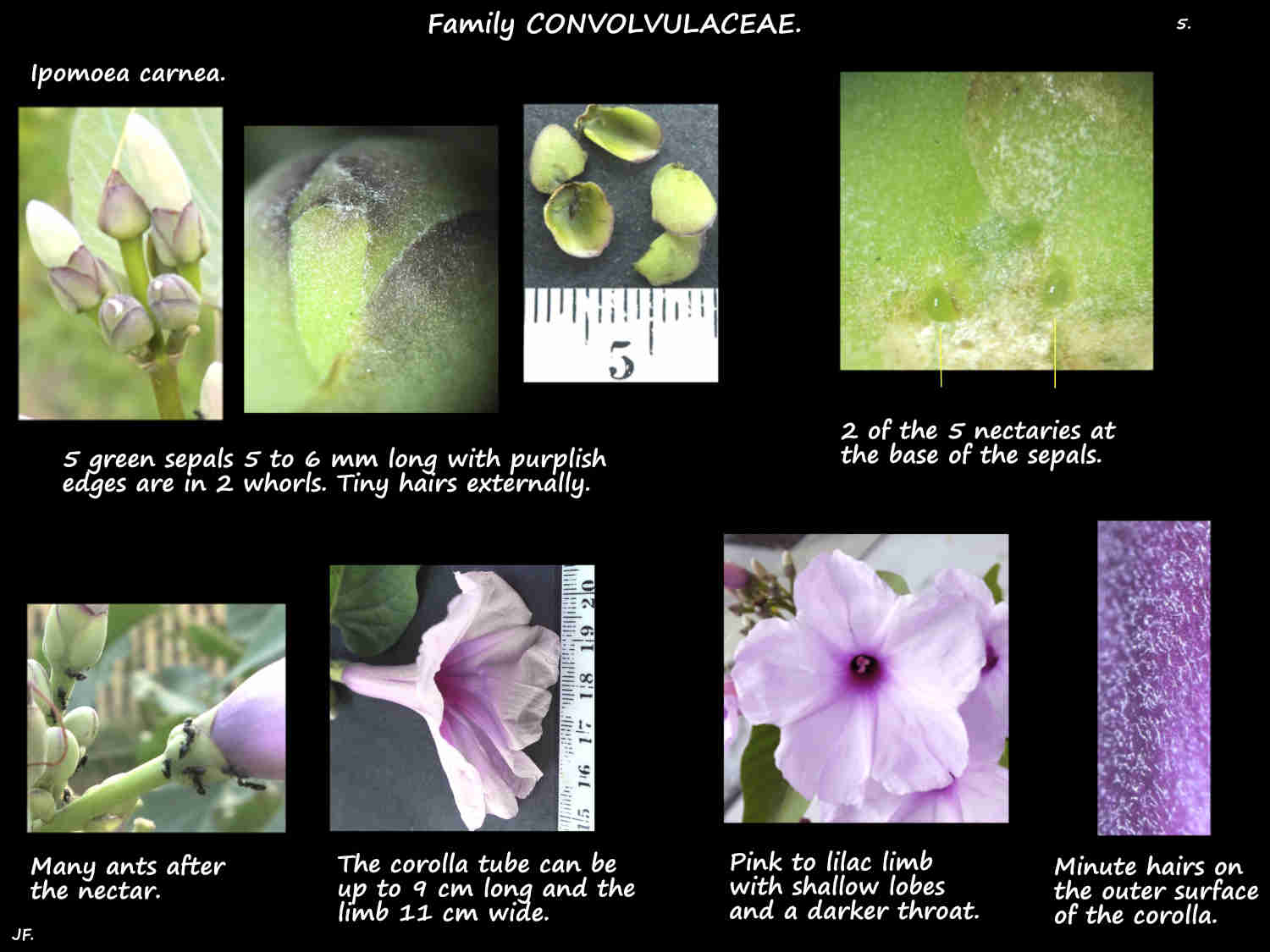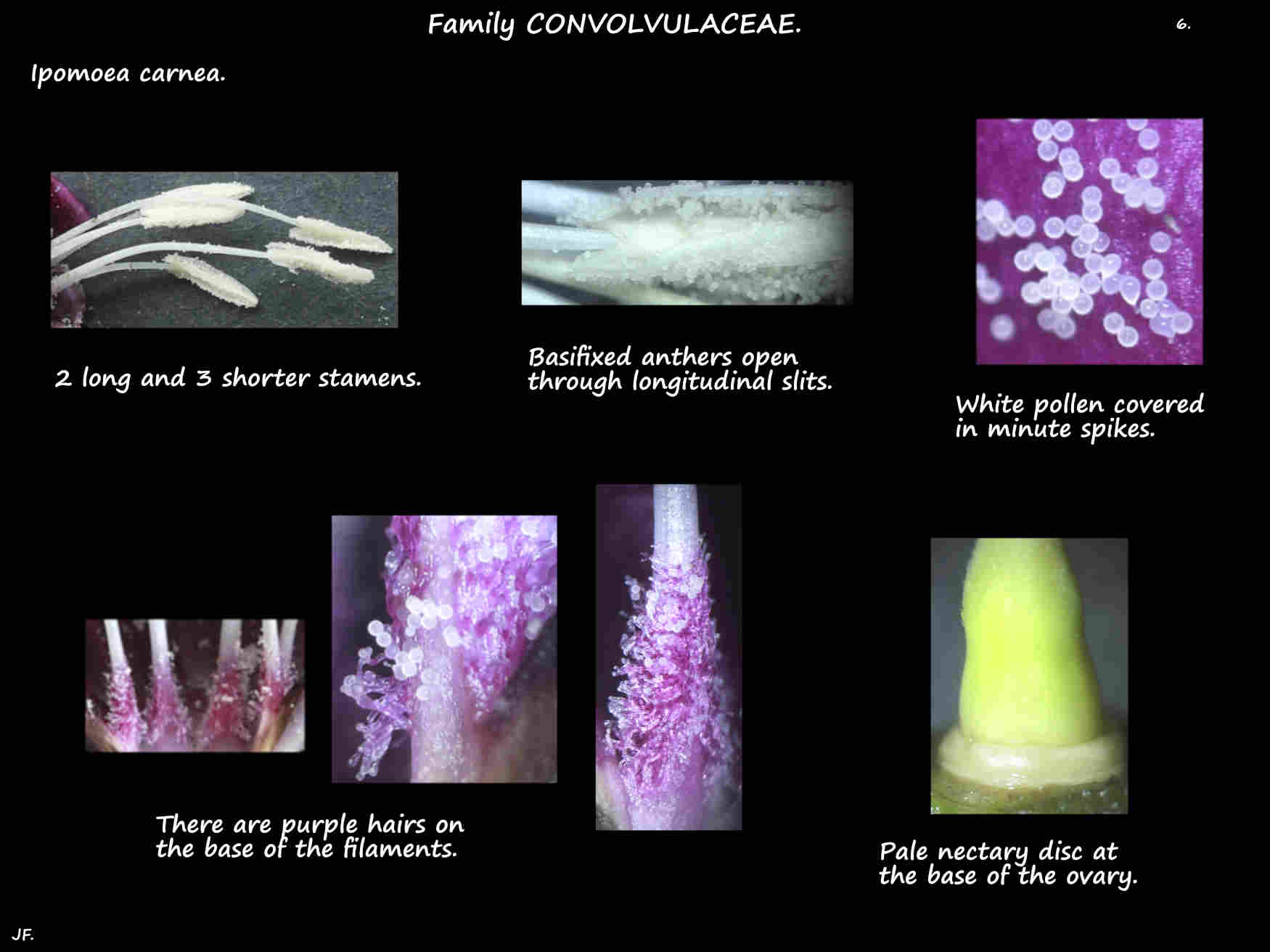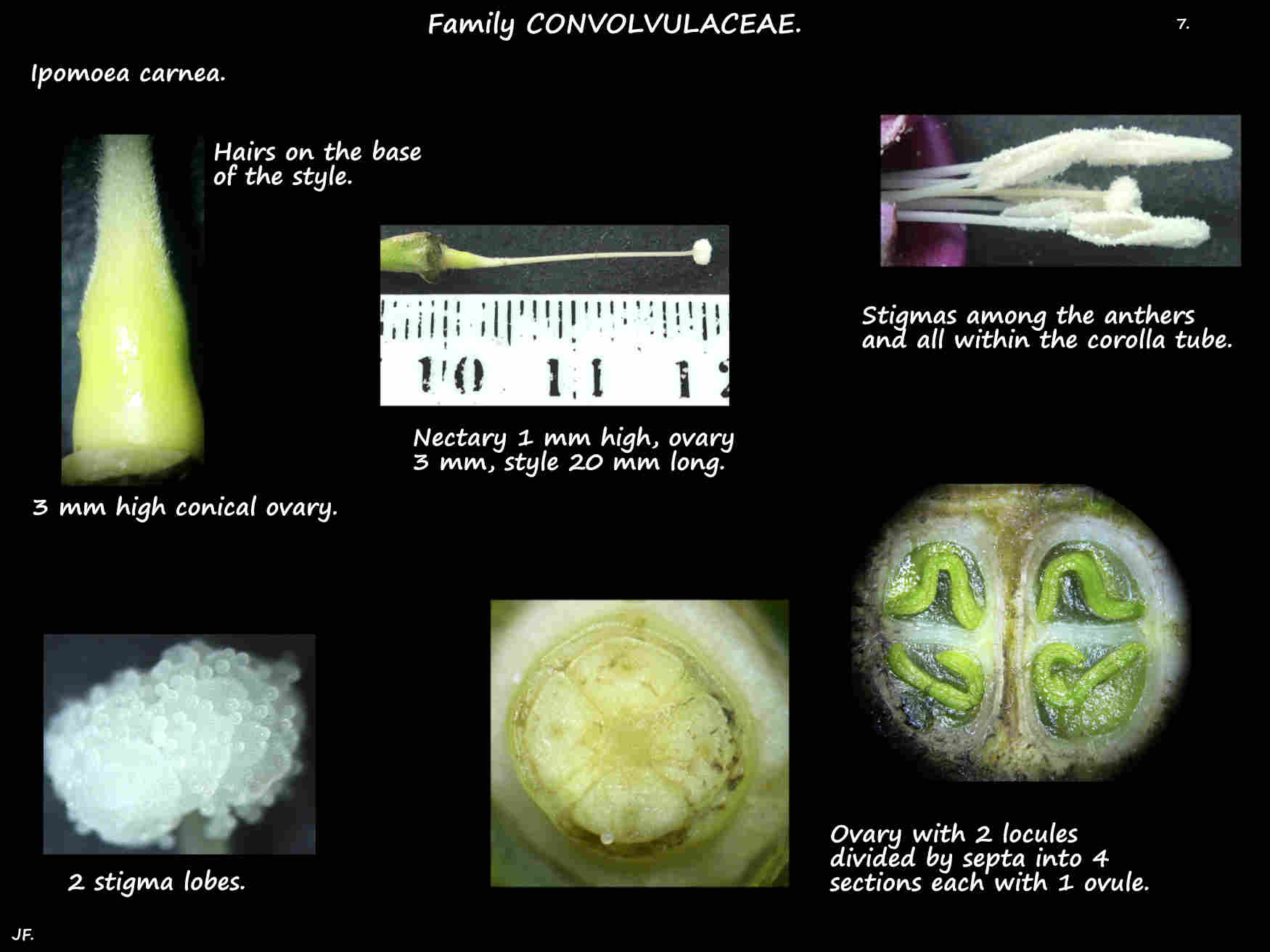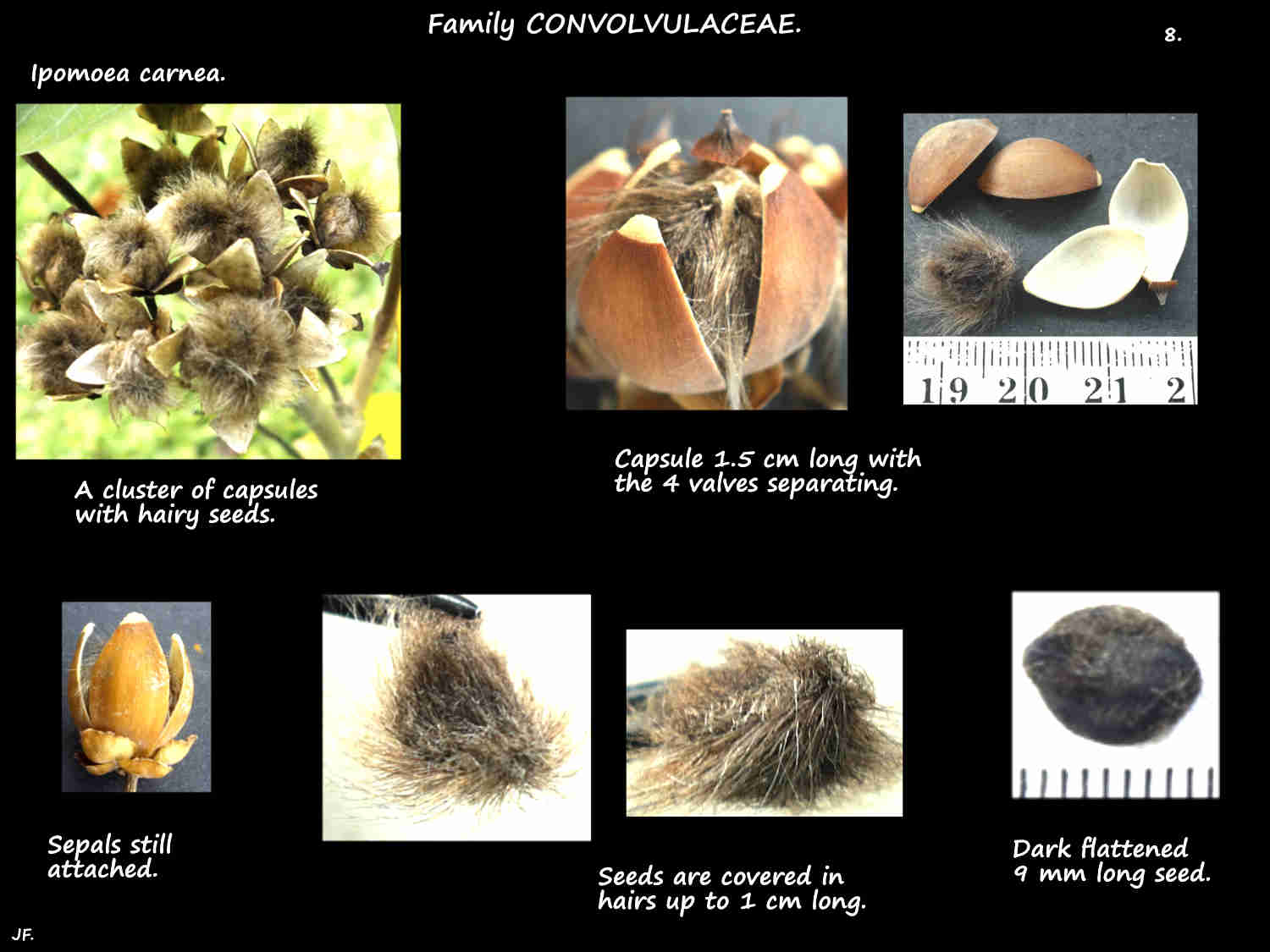Ipomoea carnea.
The Pink or Bush Morning Glory has 2 sub-species – Ipomoea carnea subsp. carnea, a synonym of Ipomoea carnea
and Ipomoea carnea subsp. fistulosa. Both are bushy shrubs but I. carnea subsp. fistulosa has a tendency
to become vine-like and is said to have narrower leaves with a longer tapering tip.
The differences might be due to their environment.
The commonly used garden plant has become naturalised in many places and in some is a weed.
Ipomoea carnea are perennial shrubs with erect sparsely branched stems 2 to 3 m long.
In some situations the stems become vine-like and up to 5 or 6 m long.
Young green stems have microscopic hairs and older light brown ones become woody.
The older ones are hollow between the nodes and have small nodules (lenticels) but no hairs.
Stems and other parts have a milky sap.
The alternately arranged leaves are on petioles up to around 6 cm long.
The top of the petiole has a swelling on each side that contains a nectary gland.
The simple blades are 6 to 25 (30) cm long and 4 to 10 (15) cm wide.
They are ovate to lanceolate with a slightly heart-shaped or flattish base and a long tapering tip with a mucro.
There are microscopic hairs on the petiole and on both blade surfaces but mainly the lower.
Branched inflorescences are clusters of a few flowers in the axils of the near terminal leaves.
They are on a stalk or peduncle up to 10 cm long.
The flowers are on a stalk or pedicel up to 1.5 to 2 cm long.
At the base of the peduncle and pedicels are ovate bracts a few mms long that fall early.
There are microscopic hairs on the peduncle, pedicels and the outer surface of the bracts.
The 5 free broadly ovate sepals around 6 mm long are in 2 whorls.
Sometimes the inner ones are slightly longer and all have minute hairs on the outer surface.
Between the sepal bases are 5 nectaries that appear on the surface as a slight swelling that has no hairs.
Each has a drop of nectar on the top.
The funnel-shaped corolla, of 5 fused petals has a narrow tubular base up to 9 cm long and a flaring
lobe or limb up to 11 cm across.
The edge of the limb is shallowly lobed and tube and limb have tiny hairs on the outer surface.
The limb is pink to pale pink or lilac and the throat is darker.
The 5 stamens insert near the base of the corolla tube.
The swollen filament bases have thick purple hairs.
The filaments are unequal with the 2 longer ones being up to 2 cm.
The 6 mm long basifixed anthers all lie within the corolla tube.
Anthers open through longitudinal slits to release the spiky white to pale yellow pollen.
There is an annular nectary disc around the base of the superior ovary.
The pale yellow conical ovary around 3 mm high has 2 locules each with 1 or 2 basally attached ovules.
The top of the ovary and base of the 15 mm long style have tiny white hairs.
The 2 lobes of the stigma lie within the corolla tube among the anthers.
The fruit are pale brown ovoid 1.5 to 2 cm long capsules with the sepals still attached.
The 4 valves open at the septa between them to release the 4 black to brown seeds.
The seeds are triangular in cross section with 2 long flat sides and one short convex one.
They are covered in hairs up to 1 cm long.
J.F.

